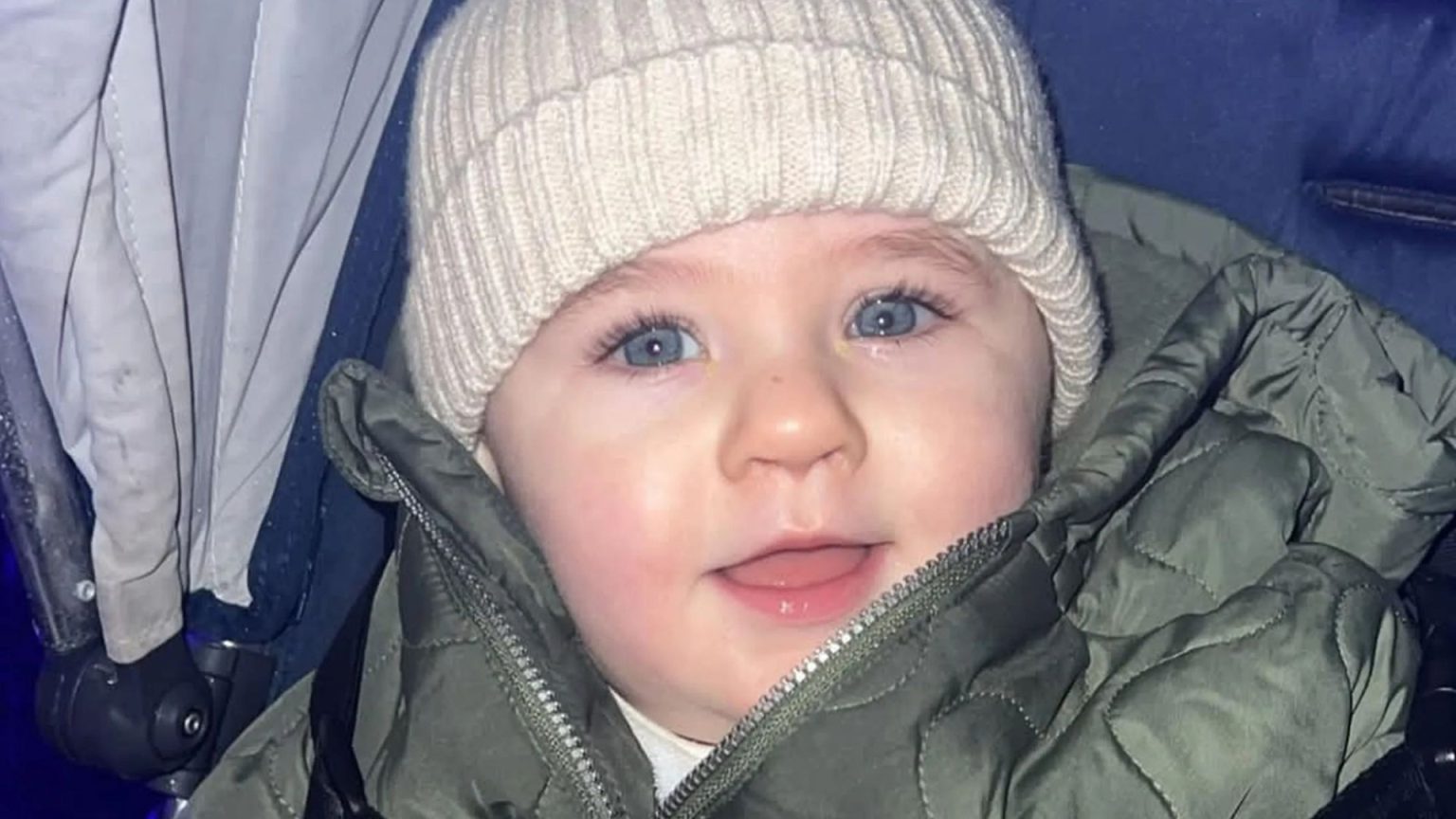Kooper’s Journey: A Parent’s Nightmare and a Beacon of Hope
Lowri Gallagher and Shane Stevenson, a young couple from Ferndale, South Wales, experienced every parent’s worst fear when their 20-month-old son, Kooper, was diagnosed with a rare and aggressive form of eye cancer known as unilateral retinoblastoma. What began as a subtle observation – a slight difference in Kooper’s eyes – quickly escalated into a frantic race against time. Lowri admits that she initially dismissed the subtle anomaly in Kooper’s gaze, attributing it to a harmless quirk. However, a conversation with Shane sparked a shared concern as they noticed a peculiar “glint” in Kooper’s left eye whenever the lights were turned off. Driven by a growing unease, the couple turned to the internet for answers, stumbling upon a chilling possibility: retinoblastoma. This rare form of eye cancer, typically affecting young children, often manifests as a white pupil reflection, a telltale sign often revealed in flash photography.
Armed with this newfound knowledge, Lowri and Shane immediately began taking photos of Kooper using the flash on their phones. Their hearts sank with each click as a stark white glow emanated from Kooper’s left pupil, confirming their worst fears. Without hesitation, they rushed Kooper to the doctor, who promptly referred them to Birmingham Children’s Hospital. The diagnosis delivered on December 13th confirmed their suspicions: Kooper had unilateral retinoblastoma, a cancer that originates in the retina, the light-sensitive tissue at the back of the eye. The news was devastating. Doctors informed the distraught parents that the cancer had already robbed Kooper of his vision in his left eye. However, a glimmer of hope remained; there was a chance to save the eye itself through chemotherapy.
The initial shock and disbelief were overwhelming. Shane recalls the initial nonchalance, admitting that he wasn’t prone to panic. However, witnessing the unusual glint in Kooper’s eye firsthand, coupled with the alarming Google search results, triggered a wave of fear. The subsequent flash photographs solidified their concerns, prompting immediate action. The diagnosis, while confirming their suspicions, also brought a sense of relief, replacing the agonizing uncertainty with a concrete plan of action. Lowri, a former military member and midwifery student, describes the week leading up to the diagnosis as the worst of her life. The unknown was a heavy burden, filled with speculation about the severity of the condition, the possibility of metastasis, and the potential loss of Kooper’s eye. The diagnosis, while devastating, at least provided a direction, a path forward in the battle against this insidious disease.
Kooper’s treatment journey began with intra-arterial chemotherapy, a targeted approach delivering the medication directly to the affected eye. This was coupled with chemotherapy injections and laser therapy, a grueling regimen expected to last a minimum of two years. Despite the challenges, Kooper, described as a “rascal” by his father, faced his treatment with remarkable resilience. However, the toddler’s struggles with the eye drops and anesthesia were heartbreaking for his parents to witness. Shane admits that without the fortuitous Google search and the revealing flash photos, they might have delayed seeking medical attention, potentially jeopardizing Kooper’s outcome. He attributes his initial complacency to Kooper’s status as a second child, often overshadowed by his slightly older brother.
In the wake of their harrowing experience, Lowri and Shane have become passionate advocates for early detection, urging parents to be vigilant in observing their children’s eyes. They stress the importance of regularly checking for any abnormalities and utilizing flash photography as a simple yet effective screening tool. The consultant at the hospital reinforced the significance of their prompt action, highlighting the unfortunate reality that many cases go unnoticed, resulting in irreversible vision loss. Shane emphasizes that their swift response likely saved Kooper’s eye. Lowri, in a poignant online post, implores parents to trust their instincts, advocating for immediate medical attention if anything feels amiss.
Kooper’s story serves as a powerful reminder of the importance of parental vigilance and the transformative power of online resources. The seemingly innocuous act of searching online and taking flash photos proved to be life-altering, leading to a timely diagnosis and a chance to preserve Kooper’s eye and, potentially, his life. Their experience underscores the crucial role parents play in safeguarding their children’s health and the invaluable contribution of readily available information in empowering them to do so. The family has established a GoFundMe page to support Kooper’s ongoing treatment, a testament to their unwavering commitment to their son’s well-being and a beacon of hope for other families facing similar challenges.
Unilateral retinoblastoma, the specific type of cancer afflicting Kooper, is a rare form of eye cancer primarily affecting young children. It develops in the retina, the light-sensitive tissue lining the back of the eye responsible for transmitting visual signals to the brain. While treatable, especially when detected early, retinoblastoma can lead to blindness and even the loss of the eye if left unchecked. The hallmark symptom is a distinctive white glow or reflection in the pupil, often noticeable in dim lighting or flash photographs. Other indicators include a squint (misalignment of the eyes), changes in the iris color, swelling around the eye, uncontrolled eye movements, vision problems, and eye pain.
The genetic underpinnings of retinoblastoma often involve a mutation in a gene regulating eye development, and the condition can be hereditary. The NHS advises parents to seek immediate medical attention if they observe any of these symptoms in their child. Prompt diagnosis and treatment are paramount in managing retinoblastoma and preserving vision. Kooper’s case serves as a stark reminder of the importance of early detection and the potential consequences of delayed diagnosis. The family’s proactive approach, fueled by online research and parental intuition, highlights the critical role parents play in advocating for their children’s health. Their story serves as a beacon of hope, emphasizing the importance of vigilance, the power of information, and the unwavering strength of parental love in the face of adversity.


